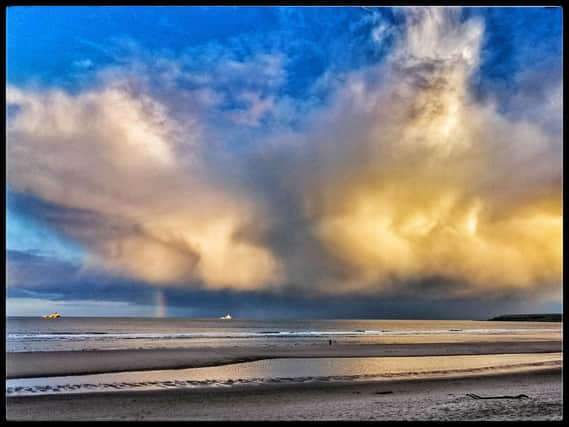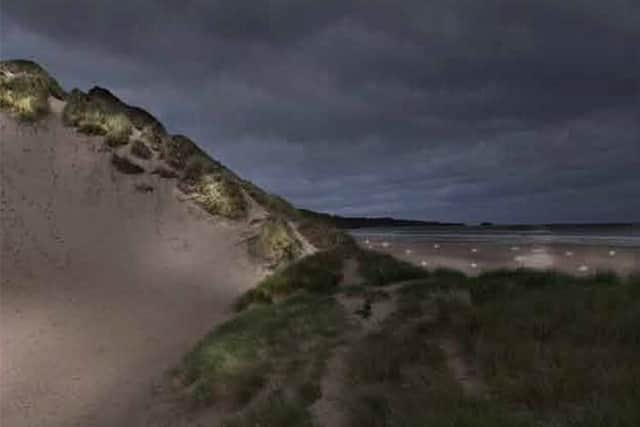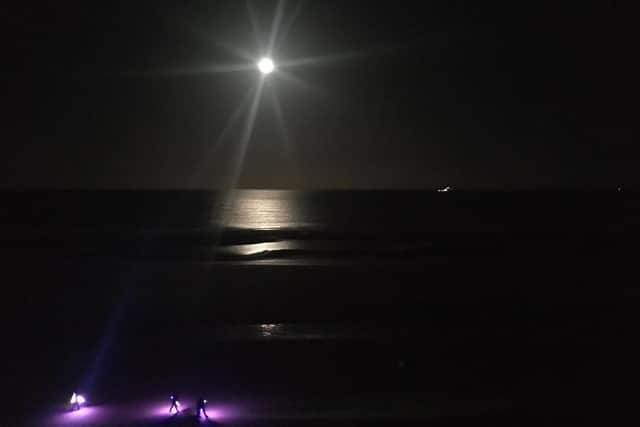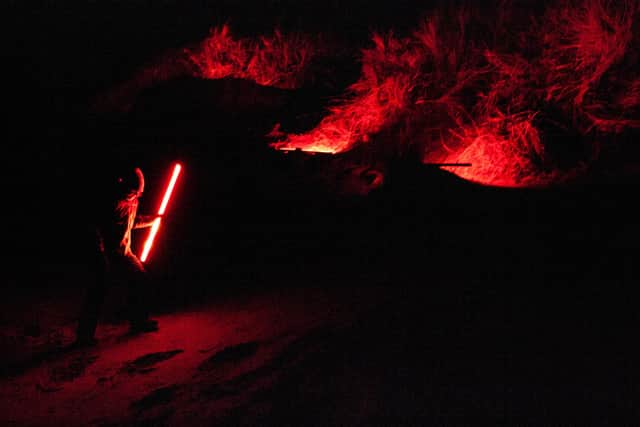2021 outdoor show to explore links between crescent-shaped beach on east coast of Scotland and 'birthplace of civilisation'


Now the dunes and shoreline of the Angus bay are being lined up to play host to a series of night-time performances which aim to take audiences back to the very birth of civilisation and explore the impact climate change is having on the modern-day landscape.
The “awe-inspiring” environmental art production” is being created for Lunan Bay, which is home to the celebrated “Red Castle” in Angus, by long-time outdoor events organiser Angus Farquhar.
Advertisement
Hide AdAdvertisement
Hide AdHe was the driving force behind previous spectacles which have transformed the Old Man of Storr on Skye, Glen Lyon in Perthshire, Arthur’s Seat in Edinburgh and the former St Peter’s Seminary in Argyll, and also instigated the Beltane Fire Festival in Edinburgh.


Over Lunan, an all-ticket event which Farquhar describes as a “monumental landscape work,” is planned to be staged in the spring of next year and is expected to feature a mix of live theatre, choral singing and sound and light effects.
It is thought some elements in the show, which Farquahar and his new company recent spent a week developing in the area, may even be staged in the sea.
The event, which is expected to be run for several weeks, will explore the flood mythologies and ancient stories around the origins of Mesopotamia, the so-called “cradle of civilisation”, around 4000 BC in present day Syria and Iraq.
Originally due to be staged this September as part of the year-long programme of events marking the 700th anniversary of the Declaration of Arbroath, Over Lunan, had been rescheduled to the spring due to the Covid-19 pandemic.


However an initial phase of the project will see the creation of an audio play and a soundtrack over the next few months as part of development for the full-scale production.
Farquhar, who closed down his acclaimed arts company NVA in 2018 after it lost its funding from Creative Scotland, has joined forces with the Arbroath-based arts centre and retreat Hospitalfield to develop Over Lunan.
His new project with Aproxima is being backed by both Creative Scotland and whisky distiller William Grant’s foundation. Early development work and research has involved the St Salvator’s Chapel Choir in St Andrews and academics in Cambridge, Amsterdam, Berlin and Jerusalem.
Advertisement
Hide AdAdvertisement
Hide AdFarquhar, who has recently created a new arts company, Aproxima, said: “When NVA closed after 25 years, the first person to get in touch with me was Hospitalfield director Lucy Byatt. She asked if I’d be interested in making a piece of work in Arbroath.


“I didn’t know the Angus area well and was surprised to discover the wild and beautiful coastline. There are deeply indented sea cliffs, high dunes and stunning beaches.
“Many people stay on the train from Dundee to Aberdeen and miss the hidden gems along the way, but there is a sizeable community who are drawn back year after year.
“Myself and lead designer James Johnson scoped a number of stunning coastal locations, but were drawn to Lunan Bay, a perfect crescent running for nearly two miles; a long indentation from the North Sea, book-ended at its extremities by great pyramidal columns of volcanic rock.
“The wind-sculpted beach is one of the largest sand masses in Scotland; during high and low tides the distance to the water’s edge can vary from 10 to 250 metres. Like all of the Angus coastline, it is constantly on the move, now affected by global warming and the rise of sea levels.


“To the north lie deeply formed sand dunes, their height testament to the actions of more ancient seas.
Farquhar said his exploration of the lunar roots of the beach’s name had led him to discover stories about a Mesopotamian moon god, named Sin or Nanna.
He added: “I became fascinated by the story of the Apkallu, featured in myths found on inscribed clay tablets, which describe half-human, half-fish hybrids who walked out of the sea for seven days to bring knowledge to people who lived there.
Advertisement
Hide AdAdvertisement
Hide Ad“The birth of architecture, astrology, astronomy, law, agriculture, in other words the basis for civil existence, were all said to stem from these encounters.
“I wondered what the Apkallu might say now if they came back for one last time. That was how 'Over Lunan' was born.
“There is a very strong scripted element to this work – it has evolved in a different way to my earlier NVA productions. Light is not the main driver.
We are drawing on local stories alongside geological records, world moments of cataclysmic ocean change and the ancient and modern history of Iraq and Syria.
“We are drawn to look at both what is right in front of us and also acknowledge these profound roots that take us back to the start of what we might call public ritual and magic in the cradle of civilisation.”
Comments
Want to join the conversation? Please or to comment on this article.